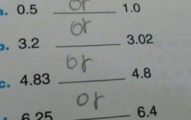Strategies for Getting Back on Track After a Study Break
Study breaks are vacations to our brain’s beaches. They offer a way to regroup, refresh, move our legs, and get out of the invasive house of textbooks and screens.
So here is the kicker, attempting to restart a car that has been stuck due to cold at night is similar to getting back in action after studying breaks. The engine sounds rougher, the gear shifts less smoothly and motivation appears to have deserted this part of town.
In this article, we will explore practical methods to switch directly from break mode to study. Whether you have been overwhelmed by Netflix or basking in the sun, here are some tips to help you get back on track and slay that academic Everest.
Understanding the Need for a Study Break
Firstly, let’s talk about the significance of taking breaks. You will soon see that not all breaks are based on guilt-free procrastination.
Mental Health Boost: Think of your brain like an endurance athlete. Can you expect to run a race non-stop without water breaks? Breaks fuel the mind, cut down on stress, reduce emotional fatigue, and give your mind a chance to refresh.
Productivity Upgrade: Breaks are not a time thief, but rather when we put the brakes on, we supercharge time. Distance from your desk allows your brain to recover, just like defragmenting a hard drive. You come back a little smarter and a little sharper, and able to solve bigger issues.
Assessing Your Current Situation
Put numbers on the gap: The first thing to do is measure how much time you have lost. Evaluate the distance between where you are and wherever you should be.
- Are you a little off course or completely off the map?
Identify priority areas: Know which subjects, tasks, or projects that you need to work on at the earliest possible moment. It might be that rough math section or that procrastinated research paper and prioritized wisely.
This step is not about blaming yourself, but rather developing a roadmap for changes.
Setting Realistic Goals
Let us break down the process of goal-setting into components which are realistic and also actionable. Use the SMART framework to make it achievable.
SMART Goals:
S – Specific: Your goal should be clearly defined, not vague or general.
M – Measurable: Establish the markers to measure your progress.
A – Attainable: Make sure your goal is something you can reach.
R – Relevant: Connect your goal to your life purpose. Why does this matter to you?
T – Time-Bound: Set a deadline. Breaking up large tasks into smaller parts.
Study Scheduling: Keeping brains and breaks in Balance
Let’s make a schedule tailored to your situation that will allow you to stay sane while still staying on track.
Start with setting goals: First of all, determine set study goals. What do you want to achieve? Break them into bite-size pieces.
Sort by subject/task: Not all subjects are made equal. Following this, priorities your topics according to the level of urgency, difficulty and personal interest.
Schedule study time: Maintain productivity by using the Pomodoro Method (25 minutes of study, 5 minutes break). Plan deliberate mini-timeouts to stretch, hydrate, or watch a penguin walk
Follow the timetable: Consistency is relative to anything. Use apps to block out distractions (goodbye, social media rabbit holes!)
Finding Motivation
- Put Your Goal on the Calendar: If that same goal is not exercised to a specific date, and let us call this external motivation, your drive goes away. Having a deadline encourages you to monitor how you are getting along and keeps the drive alive.
- Make It a Habit: Make it a habit to work for your goals. Find a pretty standard trigger (something you do already daily) and make an “if-then” plan from it. If, for instance, you have a goal of studying daily, your plan could be “If I have breakfast I will then take half an hour to study.
- Plan for Imperfection: Accept that setbacks happen. Don’t strive for perfection, make a goal toward progress. Own the process, fail forward and keep pushing.
- Set Small Goals: Divide your long-term goal into short, achievable steps. Celebrate all the mini-wins to keep up the momentum.
- Track Your Progress: Keep a journal, or app, or use a calendar to track your progress. It can help to see how much you’ve progressed.
- Reward Yourself: Cheer on the small victories and the huge wins. Rewards are the behavior enforcement agents and motivate you to do positive things.
- The Group (Positive) Thinking: Surround yourself with people who have ambition, you will get that vibe and that energy will motivate you to follow the track.
- Adjust Your Mood: Play some happy music, watch an uplifting video or do things that spark joy in your heart.
- Change Your Environment: Change the surroundings and new motivation might be found. Try working in another room or you can even take your laptop to study in a coffee shop.
- Remember Your “Why”: Take time to get back in touch with what matters behind your goal. Why does it matter to you?
Just because it seems like your motivation changes doesn’t mean that it is gone forever. However, with these approaches, you can work through these times and get back into that study mood.
Conclusion
For some people, it can be difficult to study again after being on a break for a few days; however, it is achievable in the right direction. The secret is to evaluate your current state, target realistically and manage your motivation. Other things, like getting and staying motivated, reducing distractions and applying good study techniques can also have a huge impact. We believe that with these tips you will be able to get back on track even if you have been away from your books for the longest period.



